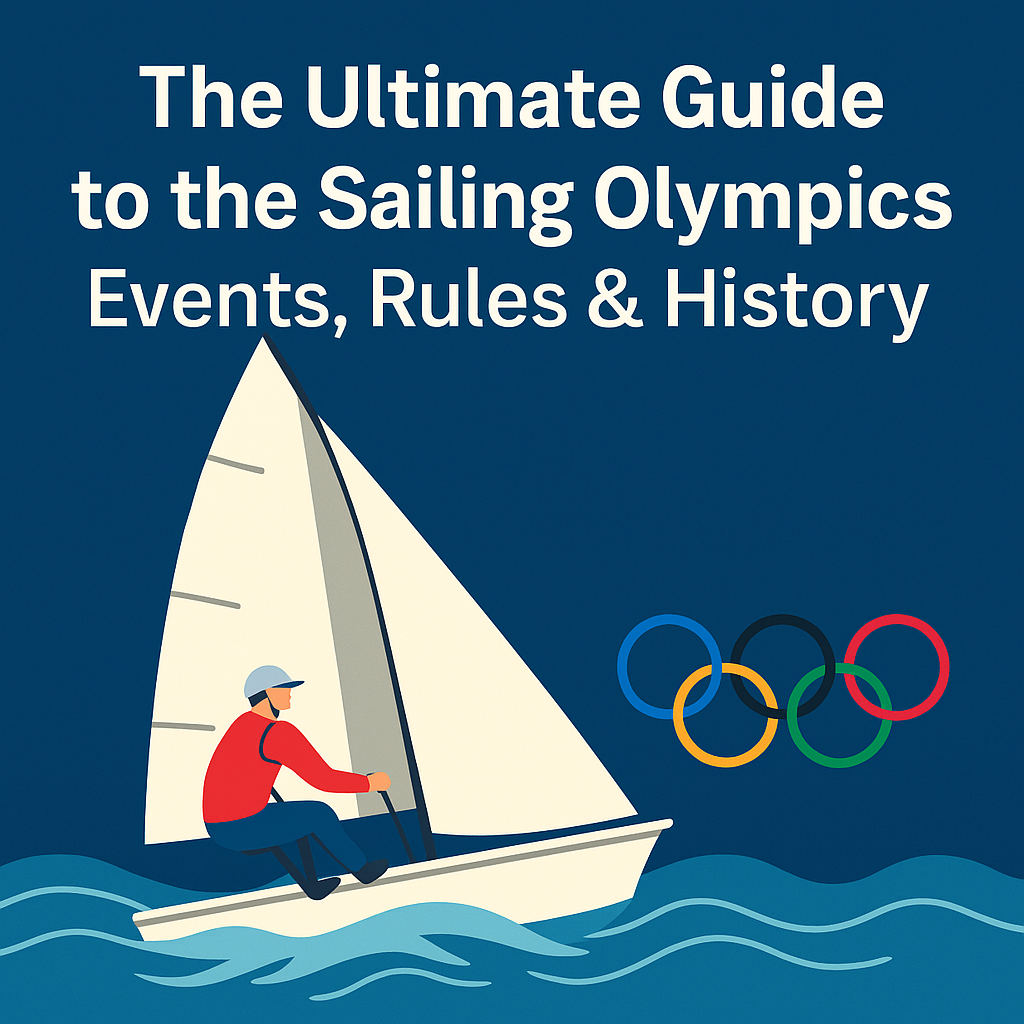Get ready to set sail into the thrilling world of sailing Olympics! This guide is written by experts, fact-checked with official sources like World Sailing and the International Olympic Committee (IOC), and designed to build trust, spark joy, and leave you inspired.
What Is Olympic Sailing?
Olympic sailing is a fast, smart, and skillful sport. Athletes race boats on open water using only the power of the wind. It’s part strategy, part strength, and all about reading the wind, waves, and timing.
Sailing became an Olympic sport because it shows off the best of human skill and nature’s force—a breathtaking mix of calm focus and explosive action.
A Brief History of Sailing in the Olympic Games
Sailing made its Olympic debut in 1900 in Paris. Since then, it’s evolved with new boat classes, better technology, and growing global talent.
The sport became fully gender-inclusive, and now includes mixed-gender teams—a proud step forward for equality in sports.
All Olympic Sailing Events Explained
Olympic sailing features 10 dynamic events:
-
ILCA 6 (women) and ILCA 7 (men) – One-person dinghy
-
470 (mixed) – Two-person dinghy
-
49er (men) and 49er FX (women) – High-speed skiffs
-
Nacra 17 (mixed) – Fast foiling catamaran
-
iQFOiL (men and women) – Windsurfing with hydrofoil boards
-
Kiteboarding (men and women) – High-flying, thrilling races coming in 2024
Each class shows off a different skill—speed, tactics, teamwork, and balance.
Types of Boats Used in the Olympics
From small dinghies to sleek foiling catamarans, each Olympic boat has a special role.
-
ILCA boats are light and fast, used for solo races.
-
49ers are made for speed and agility.
-
Nacra 17s fly above water on hydrofoils.
-
iQFOiLs and kiteboards are wind-driven surfboards that glide like magic.
These boats turn wind into power and waves into victory.
Looking for a fresh look off the water? Check out the Low Taper Fade style that’s making waves in both sports and fashion.
Sailing Rules and Scoring System in the Olympics
In sailing, the goal is to finish with the lowest score. Points match your place in each race—1st place gets 1 point, 2nd place gets 2, and so on.
At the end, sailors drop their worst race. The lowest total wins!
Rules help keep things fair:
-
Don’t block others unfairly.
-
Avoid crashes.
-
Know your right of way.
It’s a game of brains, not just speed.
Top Olympic Sailing Nations and Champions
Some countries dominate Olympic sailing, thanks to deep training programs and sea-loving cultures.
-
Great Britain, Australia, and New Zealand are powerhouses.
-
Champions like Ben Ainslie (GBR) and Marit Bouwmeester (NED) are global icons.
Their success shows what happens when passion meets precision.
How Athletes Qualify for Olympic Sailing
To reach the Olympics, sailors must prove their skill on the world stage.
-
Top finishes at World Sailing Championships count.
-
There are also continental qualifiers for fair global access.
It’s a long, tough road that rewards the truly dedicated and elite.
The Role of Weather and Wind in Olympic Sailing
In sailing, nature is both friend and rival. Wind speed, direction, waves, and even sunlight affect the race.
Sailors learn to read the sky and react in real time. A shift in the breeze can make or break the finish.
Training and Preparation of Olympic Sailors
Sailors train like world-class athletes. They work on:
-
Strength and balance
-
Tactics and teamwork
-
Weather prediction
-
Mental toughness
They practice in all conditions, turning storms into strategy and calm seas into confidence.
Want to keep your hair smooth and sea-ready? Discover how a Strands Hint can help protect and style your hair while sailing.
Paris 2025 & The Future of Olympic Sailing
The next big moment is Paris 2024—with a strong focus on sustainability and cutting-edge tech.
New classes like kiteboarding will bring even more excitement. The sport is growing, going greener, and inspiring new generations of dreamers.
✅ FAQs About Sailing Olympics
What are the different sailing events in the Olympics?
There are 10 events, including ILCA dinghies, 49er skiffs, iQFOiL windsurfing, Nacra 17 catamarans, and kiteboarding.
How does scoring work in Olympic sailing?
Sailors earn points based on their finish in each race. Lowest score wins after dropping their worst race.
Which boats are used in the Olympic Games?
Olympic boats include ILCA 6/7, 470s, 49ers, Nacra 17s, iQFOiLs, and kiteboards.
When did sailing become an Olympic sport?
Sailing debuted in 1900 at the Paris Games and has been part of nearly every Olympics since.
How do athletes qualify for Olympic sailing?
Sailors qualify through World Sailing events, continental qualifiers, and top national rankings.


